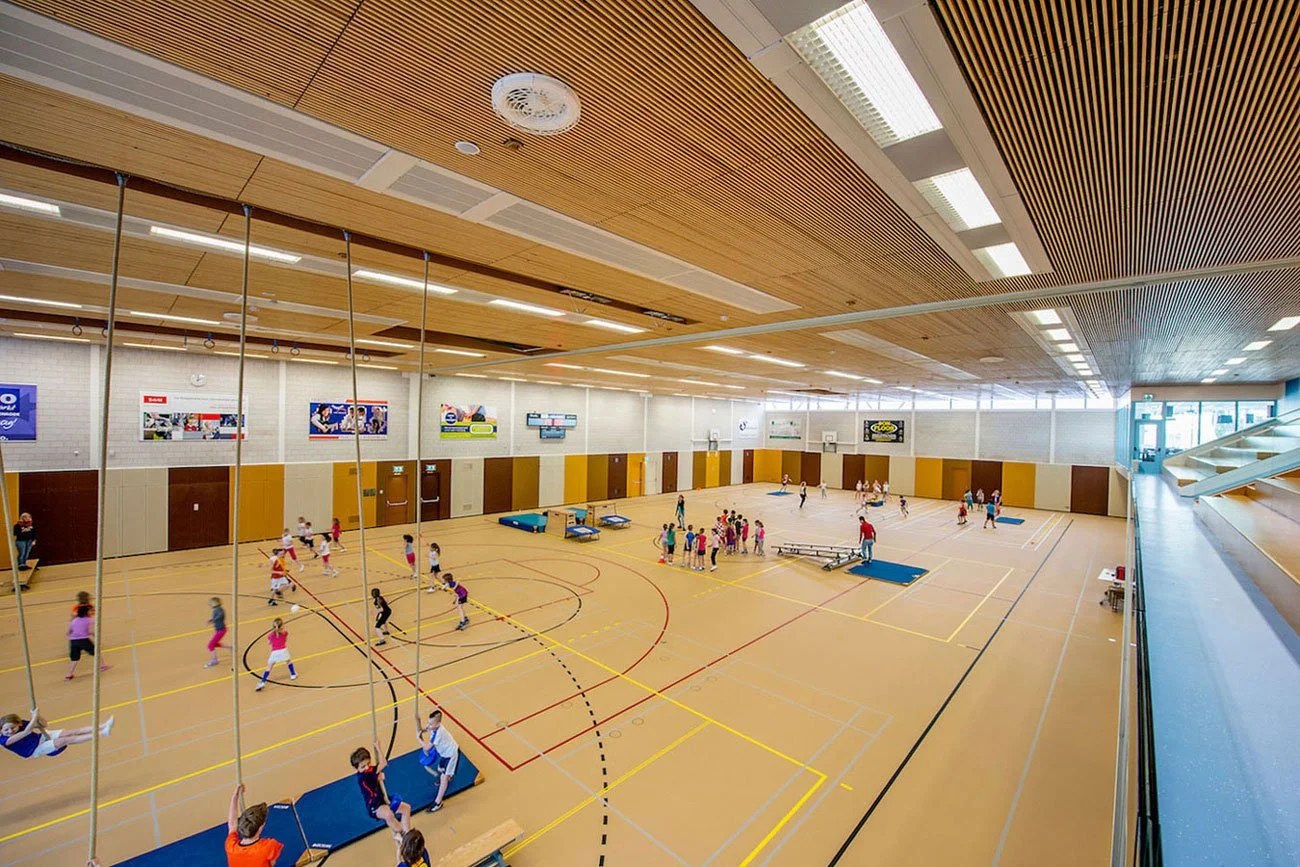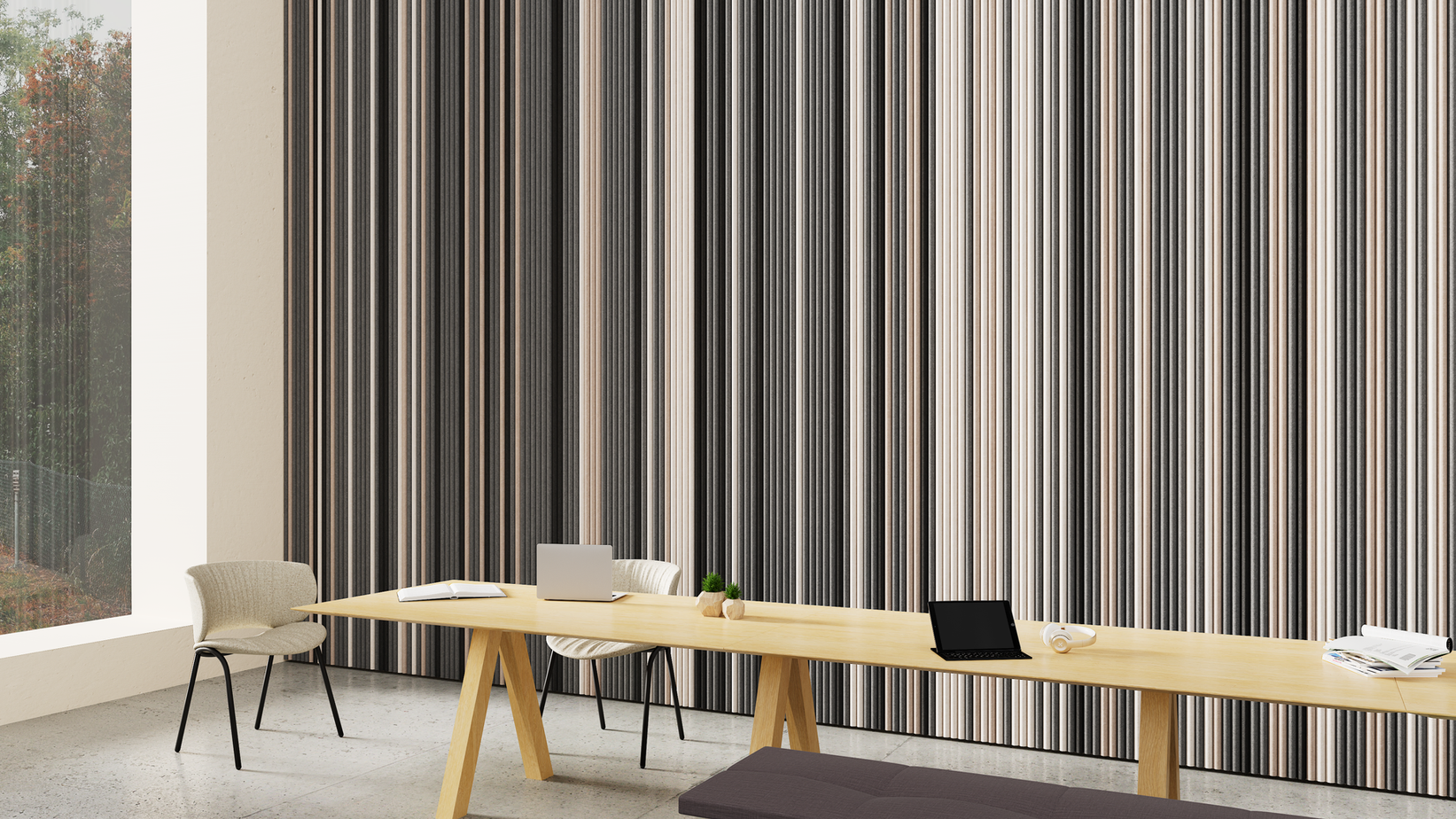Unique Acoustic Panel Design Ideas for Stunning & Functional Spaces
Acoustic panels are more than just functional tools for sound management—they're stylish additions that bring a sophisticated touch to any space. Previously reserved for theatres and recording studios, acoustic panels are now making waves in offices, schools and multi-use public areas. These panels absorb sound and reduce ambient noise, transforming noisy environments into comfortable, aesthetically pleasing spaces.
In this guide, we'll look into some of the most creative ways to incorporate acoustic panels, exploring materials, designs, and placements that add form and function.
Creative Acoustic Panel Design Ideas by Setting
Choosing the right acoustic panel design depends on the setting. Here are some inspiring ideas to transform offices, schools, and performance spaces with the magic of acoustic panelling.
Acoustic Panel Ideas for Offices
Acoustic panels in office settings manage sound and promote focus and productivity.
Professional and Contemporary Finishes: For a clean, sophisticated look, choose panels in shades like grey, navy, or black. If branding is a priority, custom panels in company colours or with logos add a unique, professional touch to meeting rooms and reception areas.
Ceiling Panels for Open Spaces: In open-plan offices, ceiling-mounted acoustic panels or baffles absorb sound from above, freeing up walls and floor space. Ceiling panels create a balanced acoustic environment ideal for teamwork and individual tasks.
Freestanding Dividers: Movable panels allow flexible partitioning, which is perfect for creating semi-private work zones or breakout areas without permanent walls. They're perfect for co-working spaces and make it easy to rearrange the layout as needed.
Studio and Theater Acoustic Panels
Top-notch sound control is vital in studios and theatres, but that doesn't mean sacrificing style.
Minimalist Aesthetics: Dark-colored panels in shades like black or charcoal keep attention on the performance or recording session. These colours blend into the background, creating a clean and distraction-free setting.
High-Density Acoustic Materials: Panels in studios and theatres use dense materials like foam or fiberboard optimized for sound absorption. These panels are essential for achieving high sound fidelity.
Geometric Arrangements: Dynamic patterns, like hexagons or diamond shapes, add energy to the space and improve sound diffusion. This edgy look suits creative environments where aesthetics and acoustics must be top-notch.
Materials and Styles to Elevate Your Acoustic Panels
Choosing a suitable material is key to achieving aesthetic appeal and acoustic effectiveness. Here's a closer look at popular options.
Wooden Acoustic Panels
Wood panels bring warmth and sophistication, which is ideal for various interior styles.
Sustainable Wood Choices: Oak, walnut, and bamboo are popular options. Bamboo is especially sustainable, and its natural hues bring eco-conscious charm to spaces.
Custom Stains and Textures: Different stain options allow for a customized look. Wood panels can match classic and modern interiors, whether with a rich, dark finish or a lighter, airy feel.
Fabric Acoustic Panels
Soft and versatile, fabric panels add warmth and are available in countless colours and patterns.
Textured Fabrics: Fabric materials bring depth to walls and come in shades to suit any room decor. Textured fabrics create a welcoming vibe, especially in cozy spaces like lounges or home libraries.
Colour-coordinated Designs: Fabric panels can complement or contrast with room decor, making it easy to create seamless transitions across different areas.
Metal and Composite Panels
Metal and composite panels add a modern twist for an industrial or minimalist look.
Durable and Sleek: Composite materials offer durability and a streamlined finish, making them ideal for high-traffic spaces like offices or commercial venues.
Reflective Elements: Metallic surfaces bring a subtle sheen, reflecting light and adding dimension to the room. This effect can create a sense of spaciousness and enhance the visual appeal of larger areas.
Creative Placement and Design Tips for Maximum Impact
Placement is crucial for both acoustic performance and visual impact. Here are some placement ideas to optimize your acoustic panels:
Wall-Mounted Panels
Wall-mounted panels can act as large-scale artwork, adding style and sound control.
Colourful Arrangements: Panels in contrasting or complementary colours create a vibrant wall feature, adding sound absorption and visual appeal.
Patterned Layouts: Arrange panels in patterns, like grids or waves, for a striking design that doubles as functional decor.
Ceiling Panels
Ceiling panels are perfect for spaces where wall space is limited or open-plan areas.
Floating Clouds and Baffles: Suspended ceiling panels absorb sound from above, making them ideal for restaurants, offices, or other busy environments.
Layered Arrangements: Hanging panels at different heights or clustered patterns creates visual depth and helps manage sound in larger spaces.
Selecting the Right Acoustic Panels for Your Space
When choosing acoustic panels, consider the space's purpose, size, and style to ensure the panels meet both sound and design needs.
Room Function: Offices might need sleek, professional panels, while home spaces benefit from cozy, decorative options.
Size and Layout: Choose panels that balance sound absorption with design without overwhelming the room.
Budget-Friendly Options: Felt panels or recycled options can deliver sound control without high costs.
The Benefits of Acoustic Panels: Where Sound Meets Style
Acoustic panels don't just improve sound—they enhance the entire ambiance. Absorbing unwanted noise makes rooms feel calmer and more intimate, creating spaces where conversations flow naturally and minimize distractions. Here's why acoustic panels are a valuable addition to any interior:
Sound Absorption and Noise Reduction
Acoustic panels absorb sound waves, reducing echo and ambient noise, which makes spaces more comfortable and conversations more evident. Imagine the difference between a bustling office and a lively restaurant where acoustic panels soften the chatter and improve focus. Home theatres, studios, and open-concept spaces elevate sound quality and reduce distractions.
Privacy and Insulation
Acoustic panels can also act as barriers, limiting sound transfer between spaces. These panels translate to more private discussions in offices and shared working spaces, which means reduced noise overlap between rooms. With acoustic panels, workspaces and living areas feel more personal and contained.
Aesthetic Enhancement
Beyond sound management, acoustic panels offer a unique design element. Available in various colours, shapes, and textures, acoustic panels can be customized to blend seamlessly with any decor, from modern and minimalist to rustic and cozy. They double as artwork, enhancing a room's visual appeal while contributing to comfort and style.
Conclusion
Acoustic panels offer a perfect blend of functionality and style, enhancing comfort and design. With materials ranging from warm wood to eco-friendly cork and finishes matching any decor, acoustic panels balance multi-use facilities and commercial spaces. Whether wall-mounted, ceiling-hung, or freestanding, these panels offer an innovative approach to sound management with a stylish touch.
If you're ready to explore custom acoustic solutions, contact our experts today to help select the best options.

















